20 Amazing Facts That Showcase the Incredible Passion for Mount Everest
Scaling the Heights: Discovering Fascinating Facts About Mount Everest
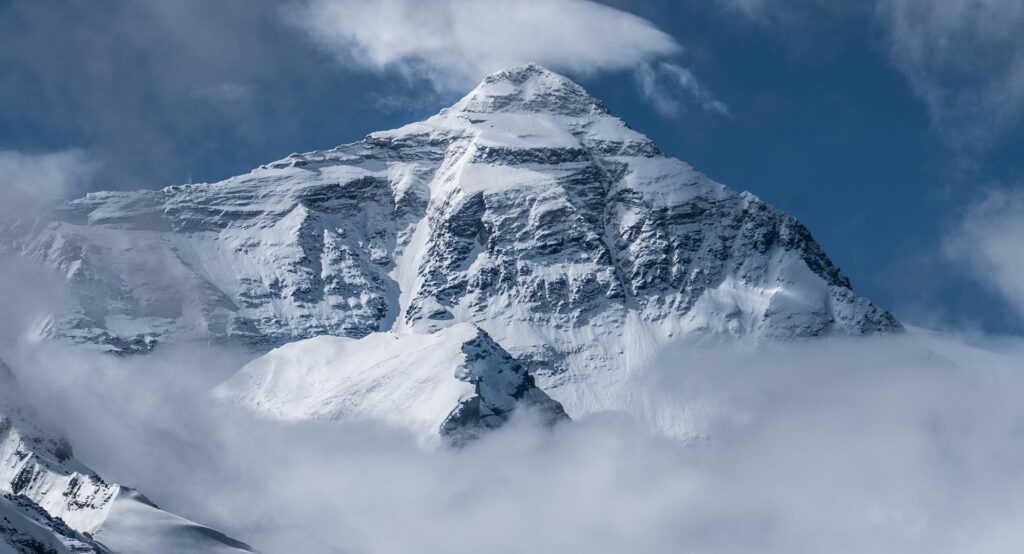
Mount Everest is the highest mountain in the world.
1 With a peak that reaches 29,029 feet (8,848 meters) above sea level.
Mount Everest is located on the border between Nepal and Tibet, which is a region of China.
2 The mountain is part of the Himalayas, which are the highest mountain range in the world, and is situated in the Mahalangur section of the range.
The first successful ascent of Mount Everest was made by Sir Edmund Hillary.
3 Sir Edmund Hillary, a New Zealand mountaineer, and Tenzing Norgay, a Sherpa of Nepal, were the first climbers to successfully reach the summit of Mount Everest on May 29, 1953.
They reached the summit via the South Col route, which is now the most commonly used route to reach the summit.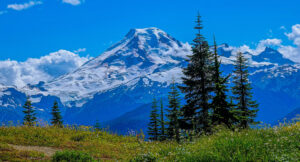
Since the first successful ascent of Mount Everest in 1953, thousands of climbers from all over the world have attempted to reach the summit.
4 The number of climbers attempting to climb the mountain has increased dramatically in recent years, leading to concerns about overcrowding and safety on the mountain.
Despite the risks involved, climbing Mount Everest remains a popular goal for many experienced mountaineers.
According to data from the Himalayan Database, there were a total of 11,306 climbers who attempted to climb Mount Everest from 1953 to 2019, with 4,833 of them successfully reaching the summit.
However, the number of climbers attempting to climb the mountain has led to concerns about overcrowding and safety on the mountain in recent years.
The death zone, the altitude above 26,247 feet (8,000 meters).
5 Where the lack of oxygen and extreme weather conditions can be fatal to climbers who are not properly acclimatized.
At this altitude, the air pressure is only a third of the pressure at sea level, which makes it extremely difficult for climbers to breathe.
The human body also begins to break down at this altitude, with symptoms such as headaches, nausea, and dizziness becoming more severe.
Climbers who enter the death zone must rely on supplemental oxygen and carefully manage their time and resources to avoid running out of oxygen or becoming too exhausted to continue.
Despite the risks involved, many climbers attempt to push through the death zone in order to reach the summit of Mount Everest.
The climbing season for Mount Everest typically runs from late March to early .
6 Which coincides with a period of relatively stable weather conditions in the region. During this time, climbers have the best chance of reaching the summit and returning safely, although there are still many risks involved.
Outside of this season, the weather conditions on Mount Everest are much harsher and the risks to climbers increase significantly.
In recent years, the climbing season has also been affected by concerns over overcrowding and safety on the mountain, with some climbers and organizations advocating for changes to be made to reduce the number of climbers and improve safety standards.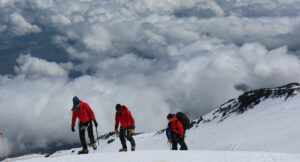
The Khumbu Glacier.
7 Is a large glacier located in the Khumbu region of Nepal, in the vicinity of Mount Everest.
It is one of the most well-known and heavily-travelled glaciers in the Himalayas, and it is often used as a route by climbers attempting to reach the summit of Mount Everest.
The Khumbu Glacier is also known for its spectacular icefall, which is an area where the glacier flows over a steep slope and breaks up into a chaotic jumble of ice blocks and crevasses.
This area is notoriously dangerous for climbers, as it is prone to avalanches, rockfall, and other hazards. Despite the risks, many climbers continue to navigate the Khumbu Glacier and the icefall in order to reach the higher altitudes of the mountain.
The Khumbu Glacier is also an important source of water for the region, as it feeds into several rivers and streams that support local communities and wildlife.
The Sherpas, an ethnic group from the Himalayan region of Nepal.
8 They are known for their expertise in mountaineering and have played a crucial role in the history of Everest climbing.
The Sherpas have traditionally lived in the high-altitude regions of Nepal and Tibet, and they have developed unique adaptations to survive in these harsh environments.
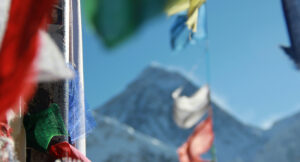 Many Sherpas have become famous for their mountaineering skills, and they have played a crucial role in guiding climbers up the slopes of Mount Everest and other peaks in the region.
Many Sherpas have become famous for their mountaineering skills, and they have played a crucial role in guiding climbers up the slopes of Mount Everest and other peaks in the region.
The Sherpas are also known for their distinct culture and language, and they have made important contributions to the arts, music, and cuisine of Nepal.
Despite their many accomplishments, the Sherpas have also faced numerous challenges over the years, including discrimination, poverty, and the dangers of mountaineering.
However, they have remained a proud and resilient people, and they continue to play an important role in the culture and economy of Nepal.
The changing climate and increasing human activity in the region have had a significant impact on Mount Everest.
9 The melting of glaciers and snowpack due to climate change has resulted in a number of changes on the mountain, including the formation of new crevasses, increased rockfall, and changes in the timing and amount of snowfall.
These changes have made climbing more difficult and dangerous, and have led to increased risks for climbers.
In addition, the increasing number of climbers attempting to reach the summit of Mount Everest each year has led to a number of environmental and social issues.
The high altitude environment of the mountain is extremely fragile, and the large numbers of climbers and support staff have put a strain on the limited resources available on the mountain.
For example, discarded climbing gear, human waste, and other debris have accumulated on the slopes of the mountain, creating a significant environmental problem.
In addition, the large numbers of climbers and support staff have created challenges for managing the mountain and ensuring the safety of climbers.
Efforts are being made to address these issues, including the implementation of regulations and guidelines for climbers and support staff, the development of new technologies for waste management and other environmental concerns, and the promotion of sustainable tourism practices in the region.
However, these efforts face significant challenges, and the long-term impacts of climate change and human activities on Mount Everest are still uncertain.
In recent years, the government of Nepal has instituted new regulations to address some of the concerns related to climbing on Mount Everest.
10 These regulations include requirements for climbers to have prior high-altitude mountaineering experience and to be accompanied by a guide, as well as rules around the use of plastic and waste management on the mountain.
Additionally, the government has increased fees for climbing permits in an effort to fund environmental and safety initiatives.
Mount Everest was named after Sir George Everest.
11 A Welsh surveyor who served as Surveyor General of India from 1830 to 1843. The mountain was originally called Peak XV until 1865, when it was officially named Mount Everest in honour of Sir George Everest.
However, it is worth noting that Sir George Everest himself never actually visited the mountain.
The first recorded attempt to climb Mount Everest was made by a British team led by George Mallory in 1921.
12 Mallory returned to Everest for two more attempts, in 1922 and 1924, the latter of which resulted in his disappearance on the mountain.
It is still not known for certain whether Mallory and his climbing partner, Andrew Irvine, reached the summit before their disappearance.
In recent years, the number of climbers attempting to summit Mount Everest has increased significantly.
13 Leading to concerns about overcrowding, environmental damage, and safety issues.
The Nepalese government has introduced regulations to address some of these concerns, such as requiring climbers to have prior high-altitude experience and hiring more support staff to help with the cleanup of trash left behind by climbers.
Despite these efforts, however, overcrowding and other problems continue to be an issue on Mount Everest.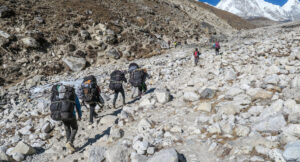
Several climbers have set records on Mount Everest.
14 Including:
- Sir Edmund Hillary and Tenzing Norgay: The first climbers to successfully summit Mount Everest in 1953.
- Junko Tabei: The first woman to successfully summit Mount Everest in 1975.
- Reinhold Messner: The first person to successfully summit Mount Everest without the use of supplemental oxygen in 1978.
- Yuichiro Miura: The oldest person to successfully summit Mount Everest at the age of 80 in 2013.
- Apa Sherpa: The person who has summited Mount Everest the most times, with a total of 21 successful ascents.
These are just a few examples of the many records that have been set on Mount Everest over the years.
In 2019, a record number of climbers, 885 people, were granted permits to climb Mount Everest.
15 However, due to overcrowding and other issues on the mountain, there were several fatalities during that climbing season.
As a result, there has been increased scrutiny and regulation of the climbing industry on Mount Everest.
The risks of climbing Mount Everest.
16 Including:
- Altitude sickness: As the altitude increases, the air becomes thinner and climbers can experience symptoms of altitude sickness, including nausea, headaches, and dizziness.
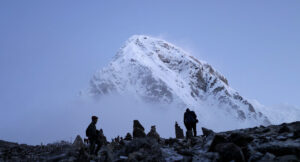 Frostbite: Climbers are at risk of developing frostbite, especially in their fingers, toes, and face, due to the extreme cold temperatures on the mountain.
Frostbite: Climbers are at risk of developing frostbite, especially in their fingers, toes, and face, due to the extreme cold temperatures on the mountain.- Avalanches: The Khumbu Icefall, a treacherous section of the climb, is prone to avalanches that can be deadly.
- High winds: Strong winds can make it difficult to climb and can also cause frostbite or hypothermia.
- Oxygen deprivation: At high altitudes, the air contains less oxygen, which can cause exhaustion, impaired judgment, and, in severe cases, loss of consciousness.
- Rockfall: Loose rocks and boulders can dislodge and fall onto climbers, causing serious injury or death.
- Crowding: With increasing numbers of climbers attempting to summit Mount Everest each year, there are concerns about overcrowding, which can lead to delays, exhaustion, and accidents.
The cost of climbing Mount Everest can vary widely depending on the expedition.
17 On average, the cost can range from $30,000 to $100,000 or more.
Some of the factors that can affect the cost include the duration of the expedition, the size of the climbing team, the level of experience and qualifications of the guides and support staff, the quality of the equipment and supplies provided, and the level of comfort and amenities offered at base camp and higher elevations.
It’s important to note that the cost of the expedition is not the only expense associated with climbing Mount Everest, as climbers may also need to cover the cost of travel, visas, insurance, and other expenses.
In addition to the physical challenges of climbing Mount Everest.
18 Climbers also face other challenges and risks, such as:
- Altitude sickness: The higher altitude can cause a range of symptoms from mild headaches to life-threatening conditions like high altitude pulmonary edema (HAPE) and high altitude cerebral edema (HACE).
- Extreme weather: Climbers can face extreme weather conditions such as high winds, heavy snowfall, and sudden storms.
- Avalanches: The unstable snow and ice on the mountain can cause deadly avalanches.
- Frostbite and hypothermia: The cold temperatures on the mountain can cause frostbite and hypothermia, which can be life-threatening.
- Oxygen deficiency: The high altitude means that the air is thinner and has less oxygen, making it harder to breathe and leading to oxygen deficiency.
- Crowding: In recent years, there have been issues with overcrowding on Mount Everest, which can lead to long wait times, exhaustion, and increased risks of accidents.
- Rockfall: The mountain is unstable, and rockfall can occur unexpectedly, leading to injuries or death.
Technical difficulties: Climbing Mount Everest requires technical skills like ice climbing and rock climbing, and climbers must be prepared to navigate difficult terrain and conditions.
Despite the risks and challenges, climbing Mount Everest remains.
19 A popular goal for mountaineers around the world. The allure of reaching the highest point on Earth and pushing oneself to the limits continues to draw climbers each year, despite the dangers involved.
The climb requires extensive physical training, mental preparation, and a significant financial investment, but for those who are successful, it can be a life-changing achievement.
Additionally, climbing Mount Everest has also become a symbol of national pride for Nepal, as it has become a significant source of revenue for the country’s tourism industry.
Reinhold Messner and Peter Habeler were the first climbers to reach the summit of Mount Everest without supplemental oxygen on May 8, 1978.
20 Here are some facts about them:
Reinhold Messner and Peter Habeler made history on May 8, 1978, when they became the first climbers to reach the summit of Mount Everest without the use of supplemental oxygen.
Reinhold Messner is an Italian mountaineer, explorer, and author. He is known for his numerous successful climbs in the Himalayas and his pioneering ascents of several of the world’s highest peaks.
Peter Habeler is an Austrian mountaineer who has made numerous successful climbs in the Himalayas and other mountain ranges around the world. He is known for his speed and endurance in high-altitude climbing.
Messner and Habeler climbed Mount Everest as part of an expedition led by Austrian mountaineer Wolfgang Nairz. The team also included several other climbers who made successful summits with the use of supplemental oxygen.
Messner and Habeler’s ascent of Mount Everest without supplemental oxygen was considered a major achievement in the mountaineering world and inspired other climbers to attempt the same feat.
Messner and Habeler went on to make numerous other successful climbs in the Himalayas and other mountain ranges around the world, both together and separately.
Messner and Habeler’s historic climb of Mount Everest is still remembered and celebrated today as a major milestone in the history of mountaineering.




As I web site possessor I believe the content material here is rattling great , appreciate it for your hard work. You should keep it up forever! Best of luck.